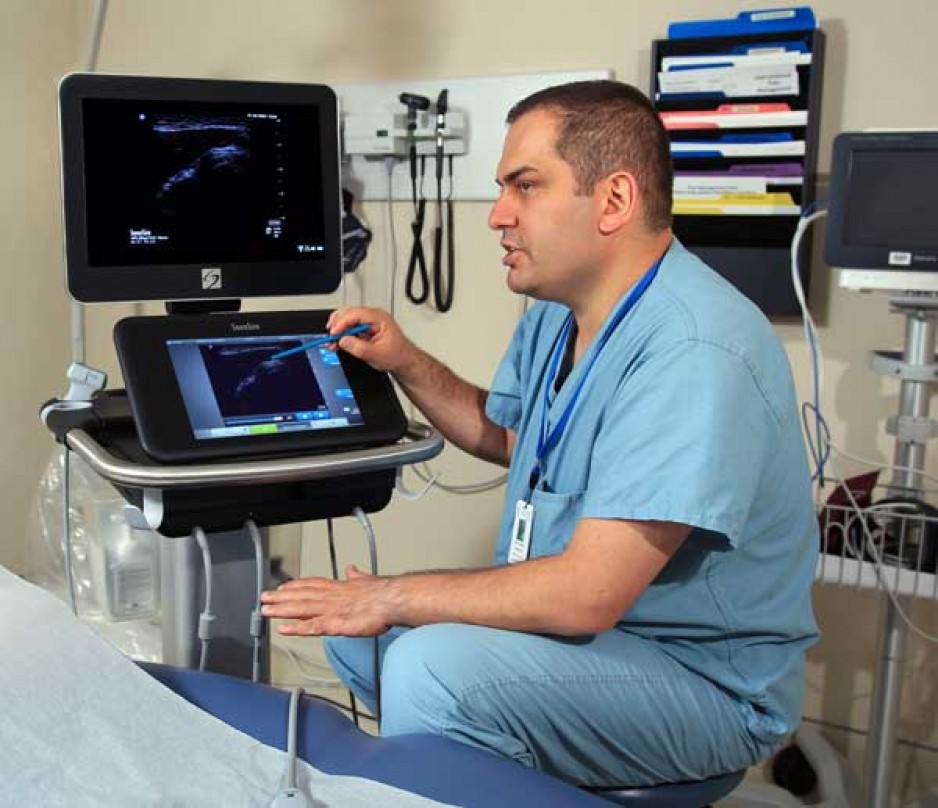New options in an old battle
While many may have heard of sickle cell disease, an understanding of its life-altering trajectory and the agony it reaps is often lacking. At St. Joseph’s, pain specialists are part of a new, collaborative approach in London to improve care for a growing number of people living with the blood disorder.
When the pain would flare, a young Margot Harvey remembers wanting to die. She describes it as an excruciating jolt that surges through your body and makes you feel sick to your stomach.
Throughout her teen years, Margot went from one pain crisis to another and spent two weeks out of every month in hospital. She missed so much high school, it took her until age 21 to graduate. An attempt at college failed due to lost time from class.
“It’s disease I wouldn’t wish on my worst enemy,” explains Margot.
Margot, now 54, is referring to sickle cell disease - a group of disorders that affects hemoglobin, the molecule in red blood cells that delivers oxygen to tissues and organs throughout the body. Those with the disease have abnormal hemoglobin molecules, which can distort red blood cells into a sickle, or crescent, shape. These abnormally shaped red blood cells slow or block the flow of blood that circulates through the tissues and organs of the body, causing damage and severe pain from lack of oxygen and a wide range of disability and illness for those with the disease.
Pain is a hallmark of this multi-system disease. But after a lifetime of struggle, Margot is now benefitting from an armoury of specialized tools, strategies and expertise through St. Joseph’s Pain Management Program in collaboration with the Red Cell Disorders Hematology Clinic at London Health Science Centre (LHSC).
A collaborative approach
Care for those with the sickle cell disease is intense, complex and multi-faceted. In addition to pain, the impact of the disease is startlingly all-encompassing and emergency room visits and inpatient stays are common. In 2017, hematologist Dr. Ziad Solh led LHSC to become the first hospital in the region to open a comprehensive care clinic for sickle cell disease patients.
The following year, St. Joseph’s Pain Management Program began collaborating with Dr. Solh, providing his patients with the gold standard in pain management. St. Joseph’s anesthesiologist Dr. Qutaiba Tawfic, who has been instrumental internationally in developing pain management protocols for patients with sickle cell disease, has become a new and valuable resource for patients.
“They are a special entity of patients and their management is unlike any other pain patient,” explains Dr. Tawfic.
Most adults with sickle cell disease have suffered episodes of extreme pain for many years, which has led to depression, frustration and a sense of hopelessnes, explains Dr. Tawfic. Medication, he adds, is not sufficient to help patients manage. They need a multi-disciplinary approach to pain to improve their quality of life.
The pain management team at St. Joseph’s includes physicians as well as nurses, psychologists, physiotherapists, occupational therapists, a pharmacist, and a social worker. Dr. Tawfic is providing one of few specialized pain management services in the province for patients with the disease.
A growing need
Sickle cell disease most commonly affects people of African, Hispanic (Central and South America), Middle Eastern, Asian, Indian, and Mediterranean descent. In London, at least 60 adults and the same number of children are living with the disorder, but the numbers are growing with changing demographics in the region.
With creation of LHSC’s clinic and collaboration with St. Joseph’s, patients are now receiving standardized and coordinated care, which includes linking with numerous specialists that patients need for care and monitoring, says Dr. Solh.
The availability of specialized pain management, he adds, “is huge” for both outpatients and inpatients in London as medical teams can now consult with Dr. Tawfic. “It totally opens up options for patients.”
For Margot, who has seen more doctors than she can count, having physicians work together is critical. Over the past five years alone, she has had repeated fractures in her foot, hand surgery, two knee replacements, a shoulder replacement and a blood transfusion when her organs came dangerously close to shutting down. At St. Joseph’s, a new approach to her pain is underway, including education in self-management – a first for Margot.
For this resilient Londoner, every day continues to be a careful balancing act to prevent a flare up, yet she is quick to put it all in perspective.
This story appeared in Issue 02 of My St. Joseph's. View more inspiring stories from the magazine.

